The Significance of Relapse in the Recovery Journey
Relapse is often viewed as a setback in addiction recovery, yet it plays a crucial role in understanding and managing long-term sobriety. In opioid addiction, acknowledging the meaning and implications of relapse is vital for preventing overdoses, which commonly occur due to decreased tolerance after periods of abstinence. This article delves into the complexities of relapse, exploring its definitions, emotional impacts, and the various strategies and treatments available to aid individuals in maintaining their recovery journey.
Defining Relapse in the Context of Opioid Addiction
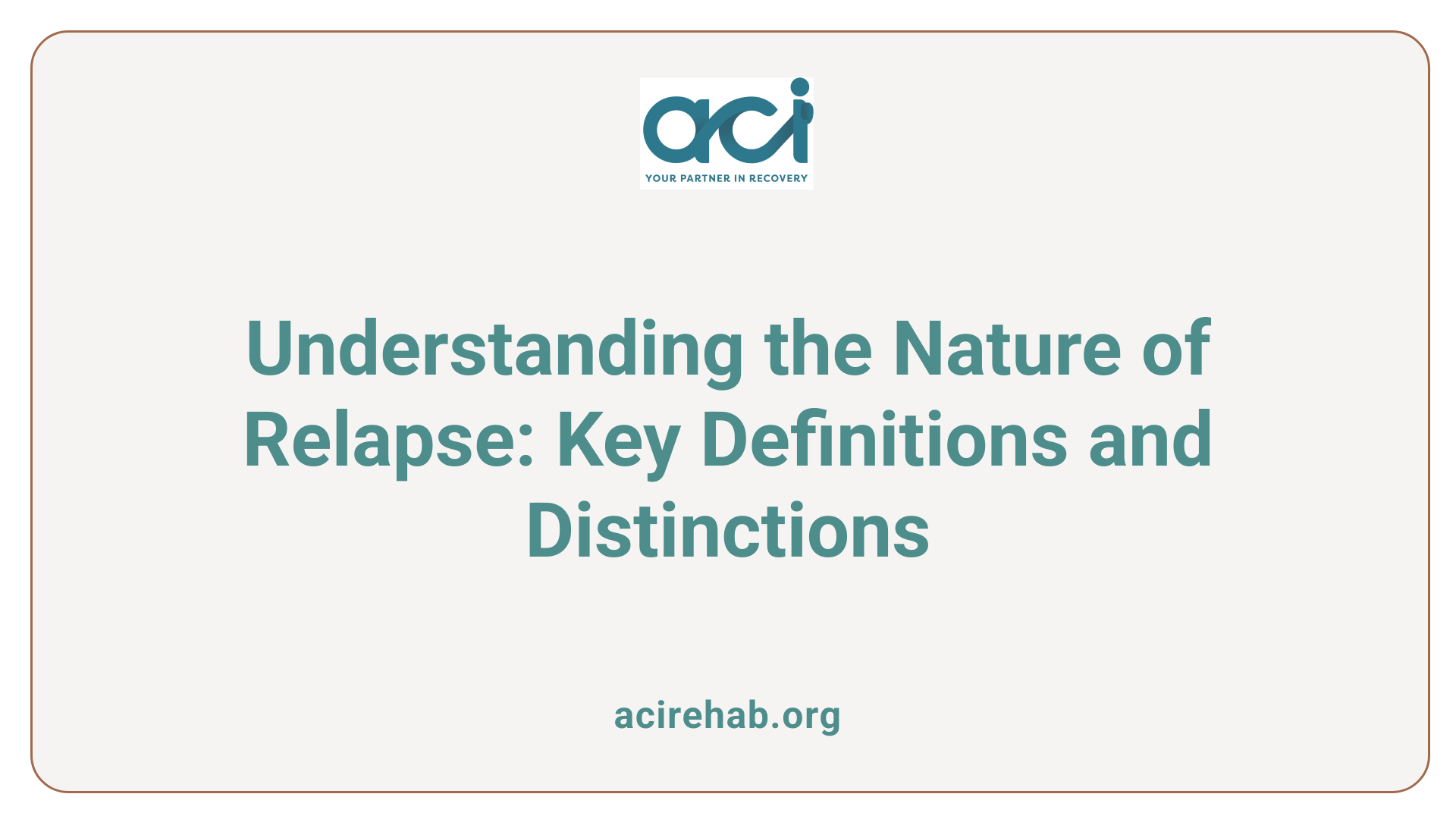
What is the definition of a relapse in the context of addiction?
A relapse in the context of addiction refers to the return to the use of an addictive substance after a period of abstinence or recovery. This occurrence often reveals a resurgence of addiction symptoms, including cravings and loss of control over substance use. Factors contributing to relapse can range from environmental triggers to emotional difficulties and stress. Recognizing the significance of relapse is essential for creating effective treatment strategies, as it underscores the chronic nature of addiction. Many recovery frameworks integrate relapse prevention methods to enable individuals to uphold their sobriety over the long term.
What is the difference between a lapse and a relapse in addiction?
The distinction between a lapse and a relapse in addiction hinges on the duration and intensity of the substance use return. A lapse is typically a brief, temporary re-engagement with the substance, which can be viewed as a minor setback easily managed within one’s recovery process. Conversely, a relapse signifies a more profound return to previous addictive behaviors, highlighting the challenges in maintaining sobriety over an extended period.
| Term | Description | Implications for Recovery |
|---|---|---|
| Lapse | A short, temporary return to substance use. | Can be a chance for reflection and quick redirection in recovery. |
| Relapse | A significant return to addictive behavior, often with loss of control. | Usually requires increased support and reassessment of recovery goals. |
Both lapses and relapses are common in recovery, but understanding their differences is crucial for navigating the complexities of addiction recovery.
Recognizing these stages helps individuals tailor their responses to setbacks and boosts the chances of achieving sustained sobriety.
Relapse and Overdose: Understanding the Connection
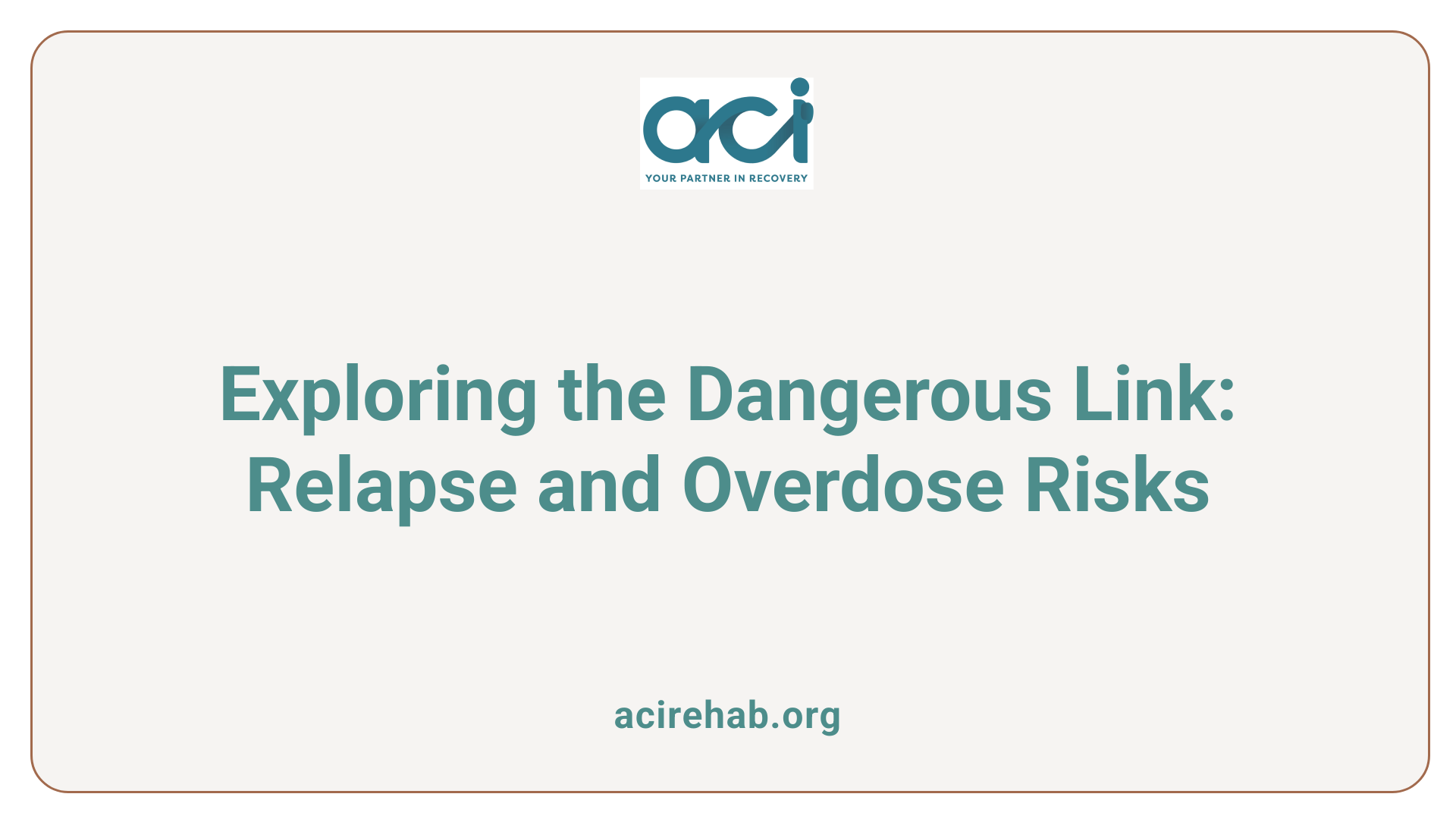
Increased Overdose Risk Due to Decreased Tolerance
Opioid addiction is a chronic condition marked by high relapse rates, with an alarming statistic indicating that about 60% of individuals may experience a relapse. A key factor in this phenomenon is the body’s tolerance to opioids, which decreases significantly during periods of abstinence. When an individual returns to drug use post-relapse, they may attempt to consume the same dosage they previously used, unaware that their body can no longer handle it. This drastic mismatch can lead to fatal overdoses.
During the first month post-treatment, individuals face the highest risks of overdose, highlighting the urgent need for awareness and caution during recovery. This risk is exacerbated by factors such as historical overdoses, high dosage use, and particularly when opioids are combined with alcohol or other substances. The likelihood of overdose is especially pronounced in the early recovery stages, where studies suggest a significant proportion of relapses occur.
Statistics on Relapse and Overdose Occurrences
Several studies emphasize the high likelihood of relapse within the initial weeks of sobriety. For instance, it’s documented that nearly 59% of individuals who relapse on opioids do so within the first week. Additionally, the probability of a fatal overdose is stark, especially after detox, as seen in the tragic case of actor Corey Monteith, who succumbed to an overdose shortly after completing treatment.
Research further indicates that relapse rates for substance use disorders can range from 40% to 60%, akin to chronic conditions such as hypertension or asthma. The circumstances surrounding each relapse underscore the need for comprehensive prevention strategies that include education on overdose risks, immediate access to naloxone, and robust support systems to reduce the chance of relapse and enhance recovery outcomes.
| Statistics | Details | Implications |
|---|---|---|
| Relapse within first week | 59% of individuals who relapse do so within 7 days | Early recovery periods are critical |
| Overall relapse rates | 40% – 60% across all substance use disorders | Similar to chronic health conditions |
| Risk of overdose post-relapse | Significantly heightened due to decreased tolerance | Calls for awareness and preventative measures |
Understandably, relapse is a part of the recovery journey. Recognizing the associated risks and employing protective strategies can enhance long-term recovery success.
Causes and Risk Factors Contributing to Relapse
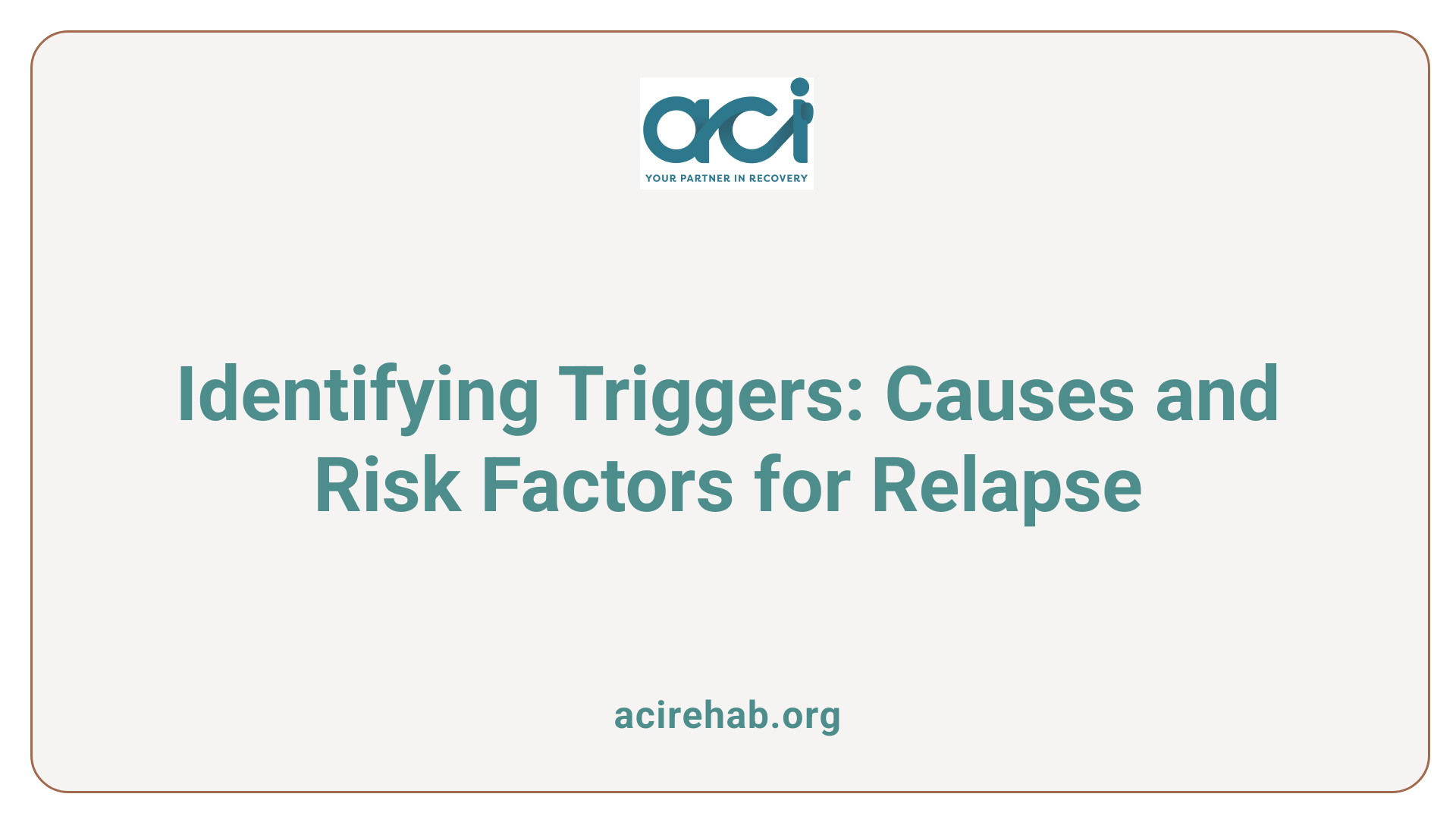
What are the causes and risk factors associated with relapse?
Relapse in individuals recovering from substance use disorders is influenced by a variety of causes and risk factors. Key triggers can be categorized as:
-
External Triggers: These include encounters with former drug dealers, being in environments associated with substance use, and social situations where drugs or alcohol are present.
-
Internal Triggers: These encompass negative emotions, cravings, boredom, and physical sensations related to past substance use.
Several risk factors heighten the likelihood of relapse, including:
- Severity of Addiction: More profound addiction states often correlate with higher relapse rates.
- Co-occurring Mental Health Issues: Conditions like anxiety and depression can complicate recovery and trigger relapse.
- Poor Coping Skills: A lack of effective strategies to deal with stress can lead to a return to substance use.
- Low Self-Efficacy: Individuals who doubt their ability to stay sober are more likely to experience relapse.
Research shows that positive social support is essential in mitigating these risks. Effective coping strategies, such as engaging in healthy activities and building a strong support network, can significantly reduce the likelihood of returning to substance use. Psychological factors, particularly stress and trauma, also substantially contribute to relapse vulnerability. Additionally, biological factors—like the brain’s response to substances and hormonal fluctuations—play a pivotal role in determining relapse risk as well.
Preventing Relapse and Managing Opioid Addiction
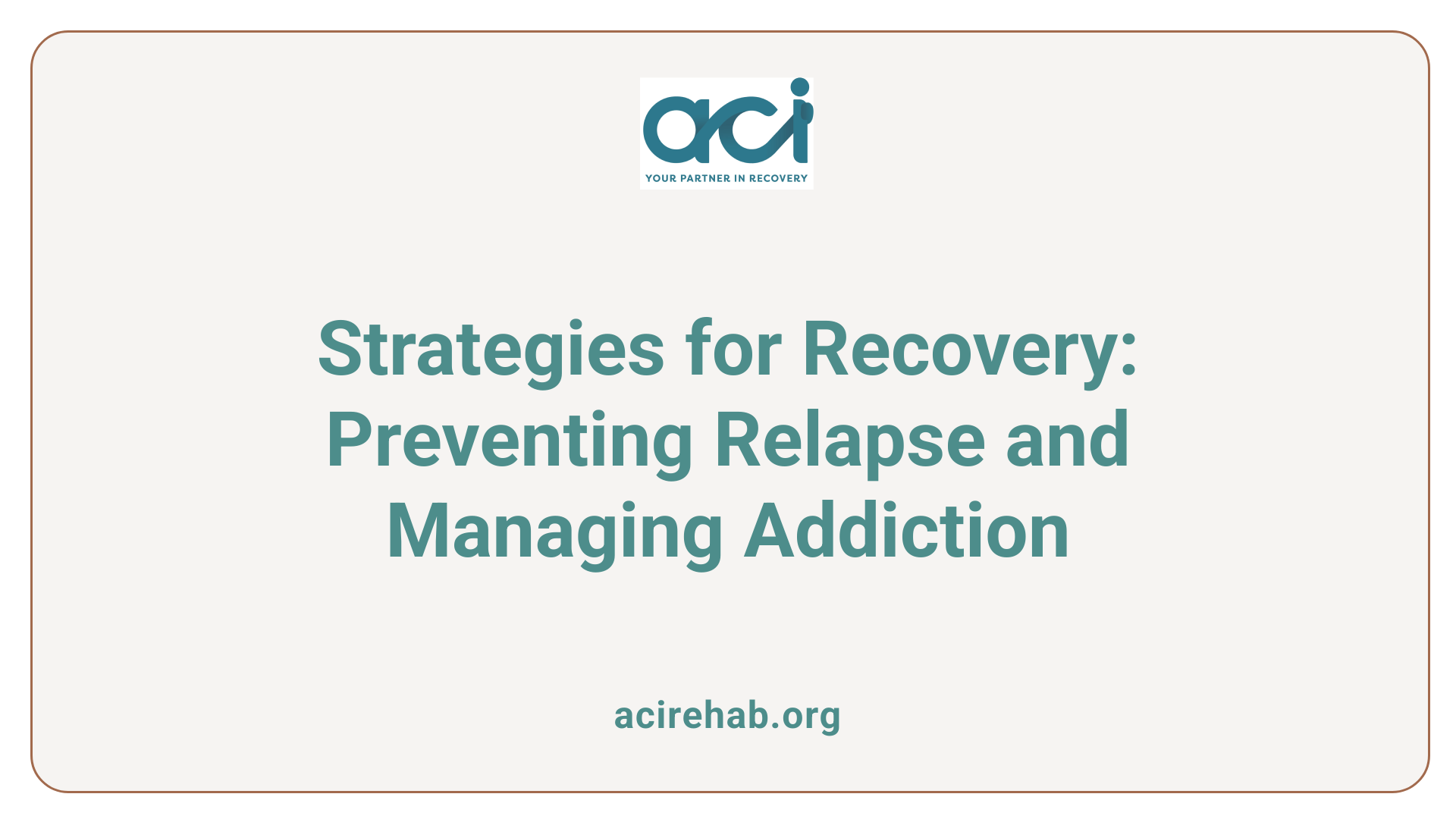
How can relapse be prevented and addiction managed effectively?
Preventing relapse and managing opioid addiction require a holistic and personalized approach. Here are essential strategies that can significantly enhance recovery outcomes:
-
Identify Triggers: Recognizing personal triggers—environmental, emotional, and social—is crucial. Keeping track of situations or feelings that lead to cravings helps in developing effective coping strategies.
-
Support Networks: Building a strong support network is vital. Engaging with support groups like Narcotics Anonymous provides a sense of community and accountability, which can deter relapse.
-
Coping Strategies: Employ effective coping techniques such as mindfulness, stress management, and healthy distractions. These can help in managing emotions and cravings that might precede a relapse.
-
Engage in Activities: Fill your time with meaningful and fulfilling activities. Exercise, hobbies, or volunteering can boost mood and reduce time spent in triggering environments.
-
Therapeutic Approaches: Cognitive-behavioral therapy (CBT) is particularly effective in teaching crucial skills to manage cravings and cope with negative thoughts. Additionally, behavioral modification therapy can further support recovery.
-
Monitoring and Aftercare: Regular follow-ups, including urine screens, can help in monitoring progress. Continued care after detox, involving both medical and psychological components, is essential to sustain recovery.
-
Medication Management: Medications like naltrexone, which reduces cravings and prevents overdose, can be an important part of managing addiction effectively.
-
Education on Risks: Understanding the risks associated with relapse, particularly concerning overdose, can empower individuals to seek help immediately if they feel tempted to use again.
Understanding these strategies is foundational for effective addiction management, ultimately reducing relapse rates and improving recovery outcomes.
Emotional Impact and Recognizing Relapse Triggers
What is the emotional impact of relapse and how can triggers be recognized?
The emotional repercussions of relapse can be significant. Individuals often experience shame, guilt, and hopelessness, which can be particularly intense for those who have devoted considerable time and effort to their recovery. These feelings may stem from the perception of relapse as a failure, leading to increased anxiety and depression, which complicates the recovery journey.
Recognizing triggers is a crucial part of preventing relapse. Triggers can be internal, such as stress or emotional distress, as well as external, like specific people, locations, or situations associated with previous substance use. Early identification of signs of emotional relapse – such as withdrawal from support systems, neglecting self-care, and negative emotional states – is vital.
To manage these triggers effectively, developing coping strategies plays a central role. This can involve techniques like engaging in healthy distractions, practicing stress management, and maintaining a cohesive support network. Having these strategies in place helps individuals navigate the challenges of their emotions and reduces the likelihood of a relapse occurrence.
Emotional Responses and Strategies to Combat Triggers
The journey to recovery is filled with highs and lows, and experiencing a relapse can trigger emotional responses that impede progress. It’s important to note that these feelings can serve as a catalyst for further growth and recovery if approached correctly.
Creating a Foundation for Recovery
Building resilience through strong support systems and understanding personal triggers equips individuals to face the emotional challenges on their path to sobriety, fundamentally reinforcing their commitment to long-term recovery.
Stages and Types of Relapse
What are the stages and types of relapse?
Relapse in addiction recovery is often viewed as a multi-phase process, and understanding the stages can provide insight for effective management. The stages typically include:
-
Emotional Relapse: At this early stage, individuals may experience heightened emotions like stress or anxiety. They might not yet be using substances but are engaging in warning signs such as neglecting self-care or withdrawing from support networks.
-
Mental Relapse: This phase includes thoughts about using substances again. Individuals may fantasize about past substance use or wrestle with cravings and triggers that could lead to a return to substance use.
-
Physical Relapse: The final stage, where the individual returns to using drugs or alcohol after a period of recovery. This often involves consuming previous doses, which can be particularly dangerous as tolerance has decreased during abstinence, increasing overdose risk.
Recognizing Relapse Types
Different types of relapse can have varied implications for recovery:
- Lapse: A brief return to substance use, which might not indicate a full relapse if the individual quickly returns to sobriety.
- Relapse: A more sustained return to using substances after a period of abstinence, typically followed by feelings of shame and guilt.
- Cycle of Relapse: For many, relapse is a recurring challenge, necessitating ongoing adjustment in treatment plans and strategies for recovery.
Understanding these stages and types is crucial as they frame the recovery process, revealing that relapse does not equate to failure but rather a learning opportunity that demands a strategic response.
The Role of Treatment and Support in Overdose Prevention
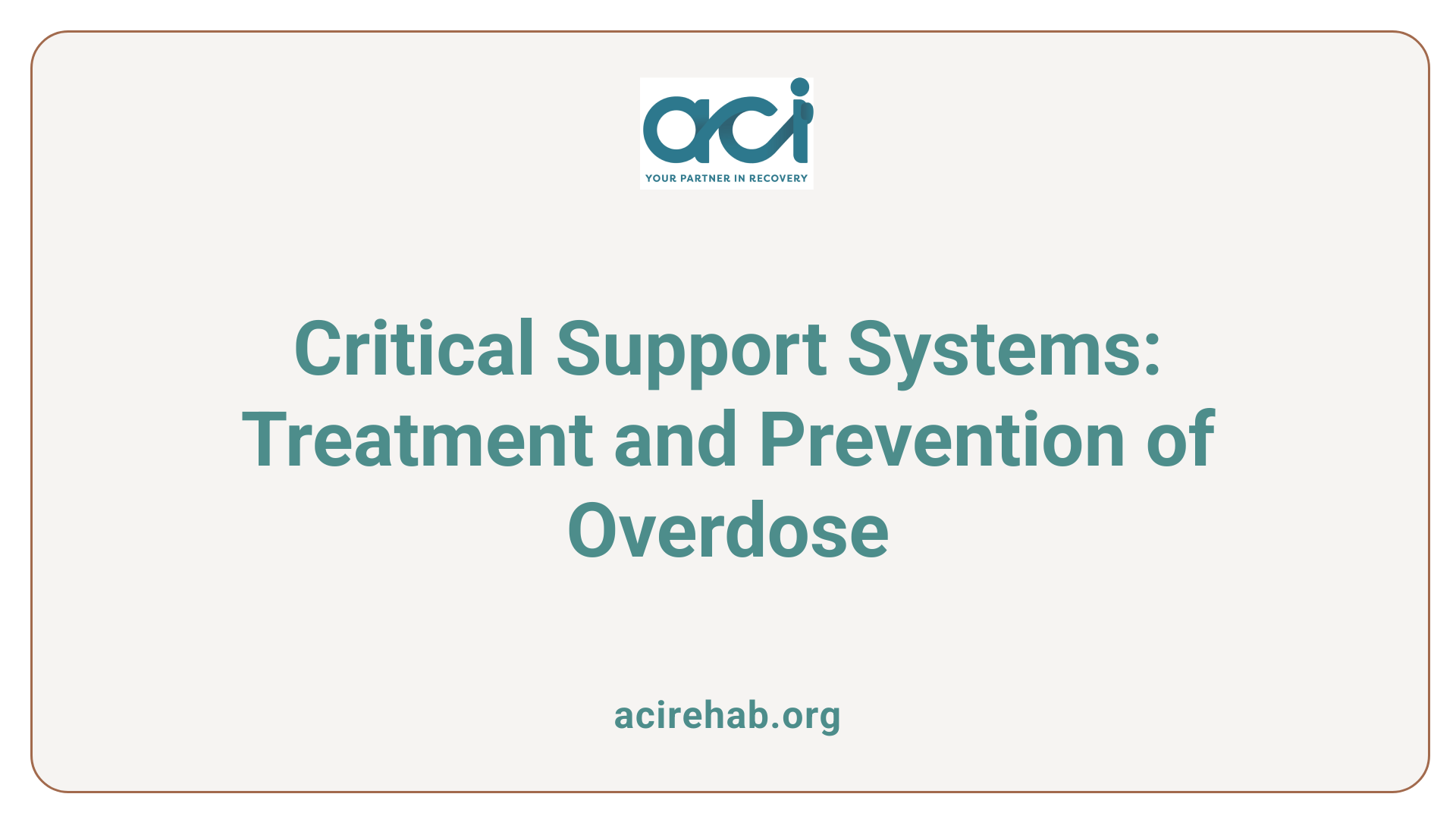
How important are treatment and support in preventing overdose after a relapse?
Access to comprehensive treatment and strong support networks is crucial for preventing overdose following a relapse. Individuals with opioid use disorder benefit significantly from services like the Substance Abuse and Mental Health Services Administration (SAMHSA) National Helpline, which provides immediate guidance toward treatment options. In moments of crisis, this access can be life-saving.
Ongoing recovery support, including counseling, peer groups, and family involvement, creates a robust safety net for individuals striving to maintain sobriety. Evidence-based treatment strategies, such as cognitive-behavioral therapy (CBT) and medication-assisted treatment, enhance recovery outcomes and reduce the likelihood of future relapses.
Education plays a vital role as well. Patients need to understand the risks associated with reduced tolerance levels after a period of abstinence. Therefore, individualized relapse prevention strategies can help tailor approaches that meet the specific needs of each person, making them more effective.
A comprehensive approach encompasses not only medical interventions but also behavioral and social components. Utilizing a multifaceted treatment model that includes medication, therapy, and social support is essential for sustaining recovery. When these elements are combined, they significantly lower the risks of overdose, fostering a healthier and more resilient recovery process.
| Component | Contribution to Recovery | Importance in Overdose Prevention |
|---|---|---|
| Medication-Assisted Treatment | Reduces cravings and withdrawal symptoms, enhancing control over use. | Lowers the risk of relapse by helping maintain stable recovery. |
| Behavioral Therapy | Teaches coping mechanisms and stress management techniques. | Equips individuals with skills to resist cravings in high-risk situations. |
| Social Support Networks | Provides emotional support and accountability among peers. | Offers a sense of belonging and reduces feelings of isolation that can lead to relapse. |
Neurobiological Insights into Relapse
What are the neurobiological factors involved in relapse?
Relapse in drug addiction is largely influenced by various neurobiological factors. One significant element is the alteration of the mesocorticolimbic dopaminergic system. This system enhances sensitivity to drugs and stressors, which can trigger cravings and lead to the reinstatement of drug-seeking behaviors.
Long-term exposure to drugs results in neuroplastic changes in the brain, particularly within the reward system. Areas such as the basal ganglia, extended amygdala, and prefrontal cortex are notably affected. These regions play pivotal roles in the development and continued maintenance of substance use disorders.
The impact of conditioned stimuli is crucial; exposure to drug-related environments or cues can provoke cravings that contribute to relapse. Chronic drug exposure can rewire brain pathways, making individuals more susceptible to triggering events even after prolonged periods of sobriety.
Understanding these neurobiological mechanisms is vital for developing more effective addiction treatment strategies. It highlights the need for tailored approaches that consider individual biological responses during critical recovery phases, ultimately assisting individuals in maintaining long-term sobriety.
Coping Mechanisms to Support Recovery
What coping mechanisms are useful for individuals facing relapse?
Coping mechanisms play a vital role for individuals navigating the ups and downs of recovery from substance use disorders. Recognizing personal triggers is essential; this helps individuals understand why they might feel the urge to use again. Practicing mindfulness enhances self-awareness and allows for better management of cravings.
Engaging in self-care routines is another effective strategy. Maintaining a structured regimen that includes adequate sleep, regular exercise, and balanced nutrition can significantly reduce emotional distress, which might otherwise lead to relapse.
Additionally, support networks are crucial. Joining groups like Alcoholics Anonymous or seeking professional counseling provides encouragement and accountability, making the recovery journey less isolating.
Techniques such as deep breathing exercises, grounding methods, and journaling can support emotional regulation during challenging moments. Adopting proactive strategies, like the ‘Five Rules of Recovery,’ helps prepare individuals for high-risk situations, creating a robust framework for long-term sobriety.
In summary, the combination of self-awareness, structured self-care, peer support, and emotional regulation techniques creates a strong support system that can significantly aid individuals in preventing relapse.
Preventing Overdose: Key Strategies and Tools
Harm Reduction Approaches
Harm reduction approaches focus on minimizing the risks associated with substance use, particularly in preventing overdose during a relapse. These strategies emphasize education about the dangers of opioids, especially after a period of abstinence, when the body’s tolerance has decreased.
Some important harm reduction techniques include:
- Educating patients about overdose risk: Individuals must be aware that returning to pre-abstinence dosage levels can be fatal.
- Building a strong support network: Having supportive friends and family can help in identifying triggers and high-risk situations.
- Coping strategies: Engaging in healthy activities and practicing self-care can aid in managing cravings and emotional struggles.
Using Naloxone in Overdose Prevention
Naloxone (Narcan) is a life-saving medication that reverses the effects of an opioid overdose. It is crucial for individuals at risk of relapse to have naloxone readily available and to be trained on how to use it effectively.
Understanding the signs of an overdose, including unresponsiveness and shallow breathing, can prompt timely intervention, which can be life-saving.
| Strategy | Details |
|---|---|
| Harm Reduction Approaches | Focus on minimizing risks of substance use and educating about overdose. |
| Using Naloxone | A critical tool for reversing opioid overdoses, available to those at risk. |
| Ongoing Support and Monitoring | Essential for preventing relapse and ensuring recovery sustainability. |
Moving Forward with Understanding and Support
In addiction recovery, understanding the multifaceted nature of relapse is essential for preventing the tragic outcomes of overdose. By recognizing the physiological and psychological components of relapse, individuals and their support networks can better prepare for the challenges of maintaining sobriety. Incorporating comprehensive treatment plans that include medication, therapy, and community support can significantly reduce the likelihood of relapse and overdose. As we continue to explore and address the complexities of addiction, education and proactive strategies remain vital in achieving long-term recovery and ensuring a safer, healthier future for those affected by opioid addiction.
References
- Opioid Relapse and Accidental Overdose
- Relapse
- Embracing Relapse To Prevent Overdose
- Addiction Relapse Prevention – StatPearls
- Addiction Relapse: Risk Factors, Coping & Treatment Options
- Reducing Relapse Risk – Whole Health Library
- The Science Behind the Overdose Dangers of Relapse, …
- The Science of Addiction Treatment and Recovery
- Opioid Relapse Rates, Statistics, Withdrawal, & Prevention

